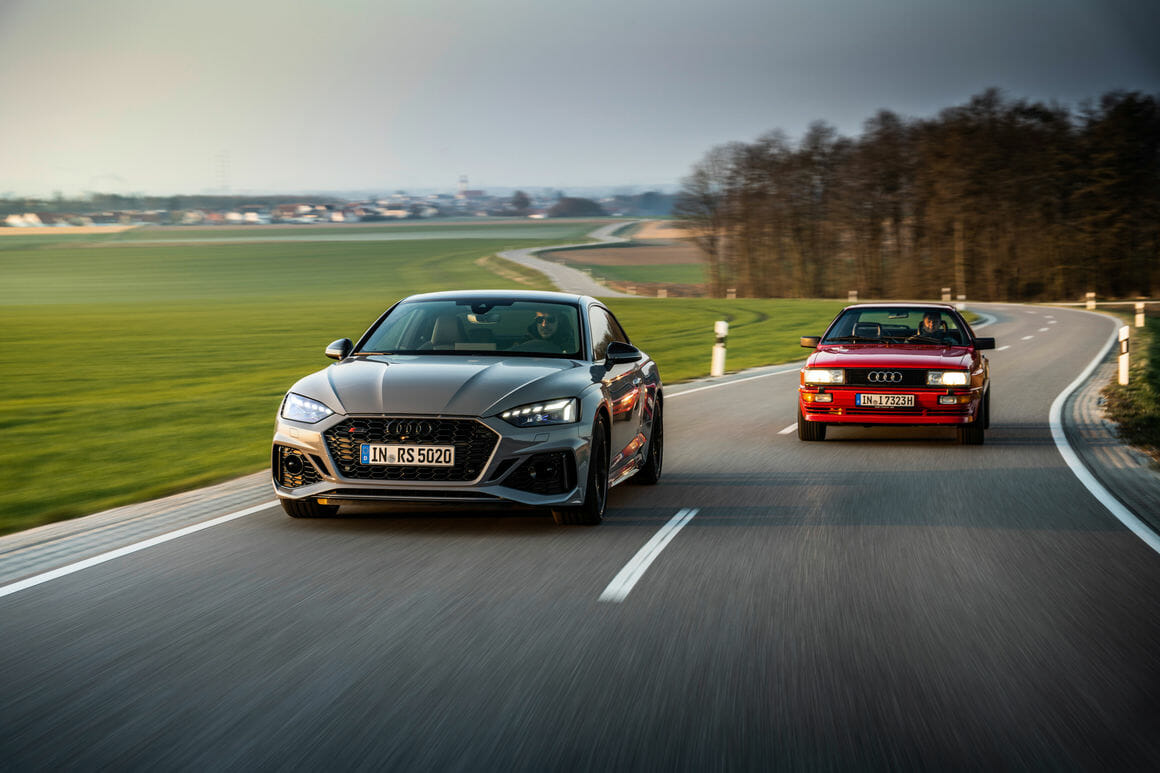It has been forty years since the Audi quattro first made its debut at the Geneva Motor Show in 1980. Since then, ‘quattro’, the all-wheel-drive technology which shares its name with an iconic car has now become a cornerstone for the brand. Audi has produced almost eleven million cars with quattro drive systems while advancing all-wheel-drive technology through these years. Going forward, the latest state of development is the electric quattro with electric torque vectoring.
By September 30, 2020, Audi had produced 10,947,790 cars with all-wheel drive, including 499,379 in the first months of 2020 alone. Just over 44 percent of these cars were equipped with a quattro drive system. Available in every model series except the compact A1, all large and particularly powerful vehicle versions, as well as all S and RS models, transfer their horsepower to the road through all four wheels.
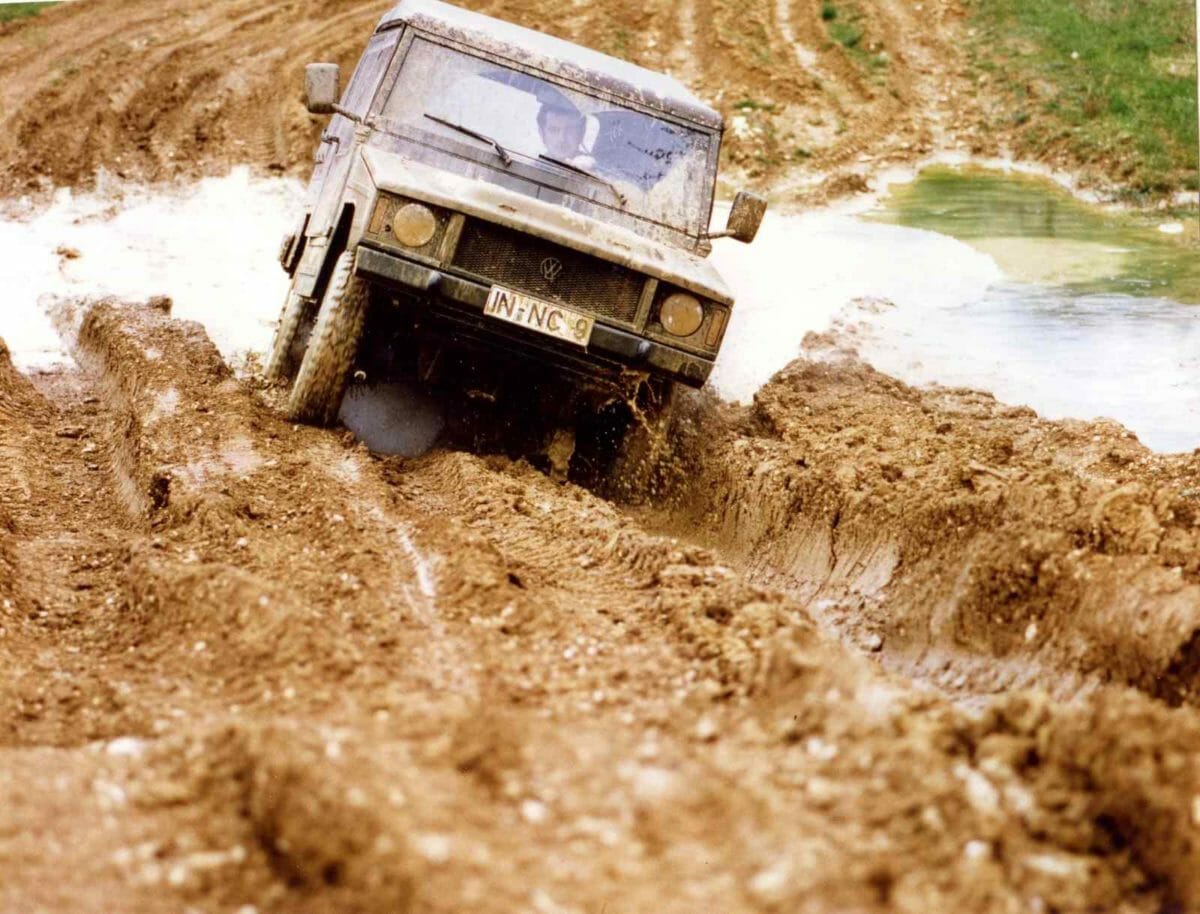
The all-wheel-drive quattro technology can trace its roots back to the winter of 1976/77 when a team of Audi engineers conducted a series of test drives in the deep snow of Sweden. An Iltis travelled along for comparison purposes, and the all-terrain military vehicle with its high ground clearance outperformed the much more powerful front-wheel-drive prototypes. During this trip, it dawned on the engineers that Audi could realistically use the all-wheel-drive system even on high-performance passenger cars – but it would have to be a completely new type that was lightweight, compact, and efficient, and could manage without a heavy transfer case or second prop shaft.
The stroke of genius that made it all possible was the hollow shaft – a drilled-out, 263millimeter (10.4 in) secondary shaft in the transmission that directed power in two directions. From its rear end, it drove the housing of the centre differential, which was configured as a manually locking bevel-gear differential. In normal situations, it sent 50% of the power along the prop shaft to the rear axle, which was equipped with a second locking differential. The other half of the torque was transferred to the front axle’s differential along an output shaft rotating inside the secondary shaft. The quattro drive system was born. The centre differential has evolved continuously since the time it made its first appearance with the Audi quattro, an angular coupé with a five-cylinder turbocharged engine delivering 147 kW(200 PS).
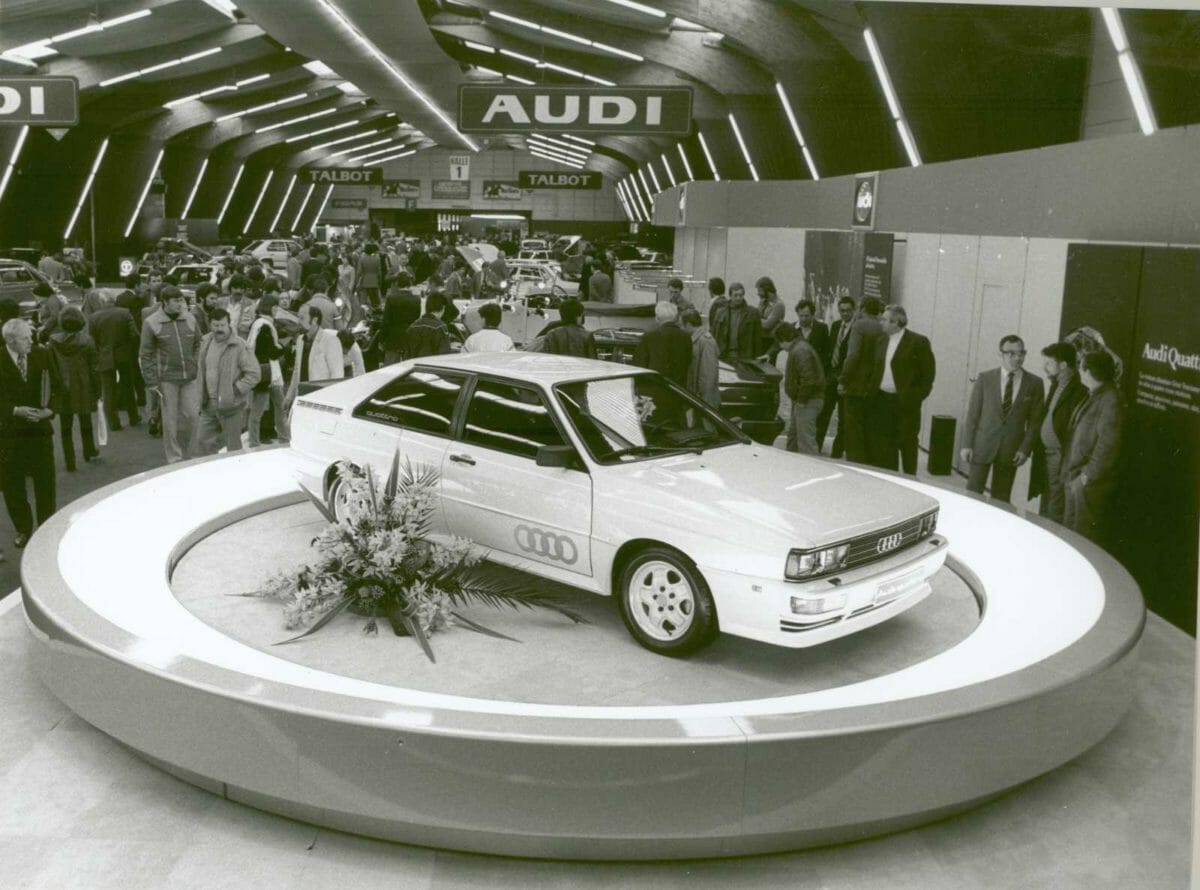
Originally planned for only low-volume production, the original quattro ended remaining part of the model line-up until 1991, having undergone numerous refinements along the way. In 1984, it was joined by the Audi Sport quattro with a short wheelbase. Producing 225 kW (306 PS), it was an exclusive high-performance sports car at the time. With the new Audi 80 released in 1986, the brand introduced the second generation of its Quattro technology, featuring the Torsen differential (Torsen: torque sensing), which was designed as a worm gear transmission.
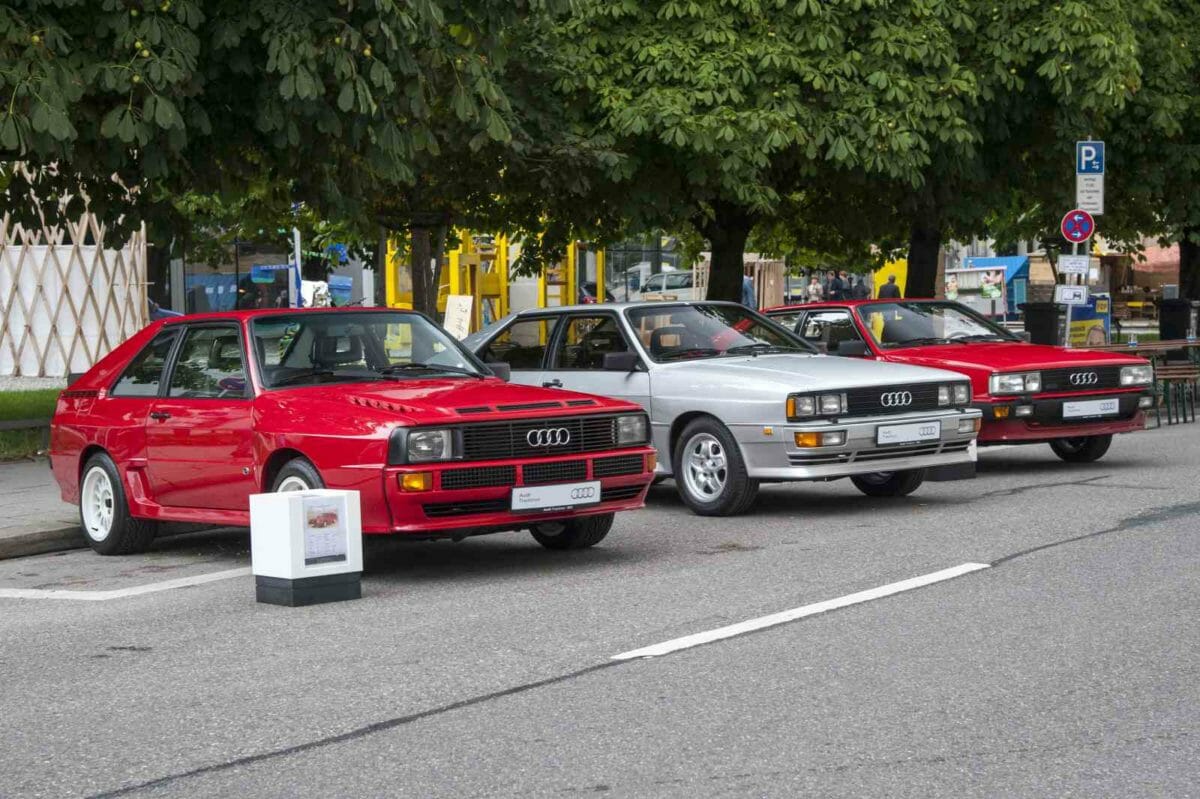
The new differential was accompanied by an enormous technological advance and provided a technical basis that has undergone extensive further development and is still used today. When a vehicle axle lost traction, friction would be created in the helical gears of the differential, allowing up to 75% of the torque to be diverted to the other axle. These higher locking figures enabled a clearly defined torque distribution in every driving situation. The next big step in the evolution of the models with longitudinal front-mounted engines came in 2005 with the Audi RS 4. The new planetary gearing distributed the forces in a rear-biased 40:60 ratio in normal conditions. This third generation of the centre differential has undergone further stages of development since then. The current generation can distribute 85% of the drive torque to the rear axle and up to 70% to the front axle as needed.
The Future
With the e-tron and the e-tron Sportback, Audi entered not only the age of sustainable electric mobility in 2019 but also the era of electric all-wheel drive. Electric motors drive the front and rear axles in both SUV models. The suspension and drive control units work closely together to regulate the ideal distribution of drive torque between them – continuously, fully variably and within fractions of a second.
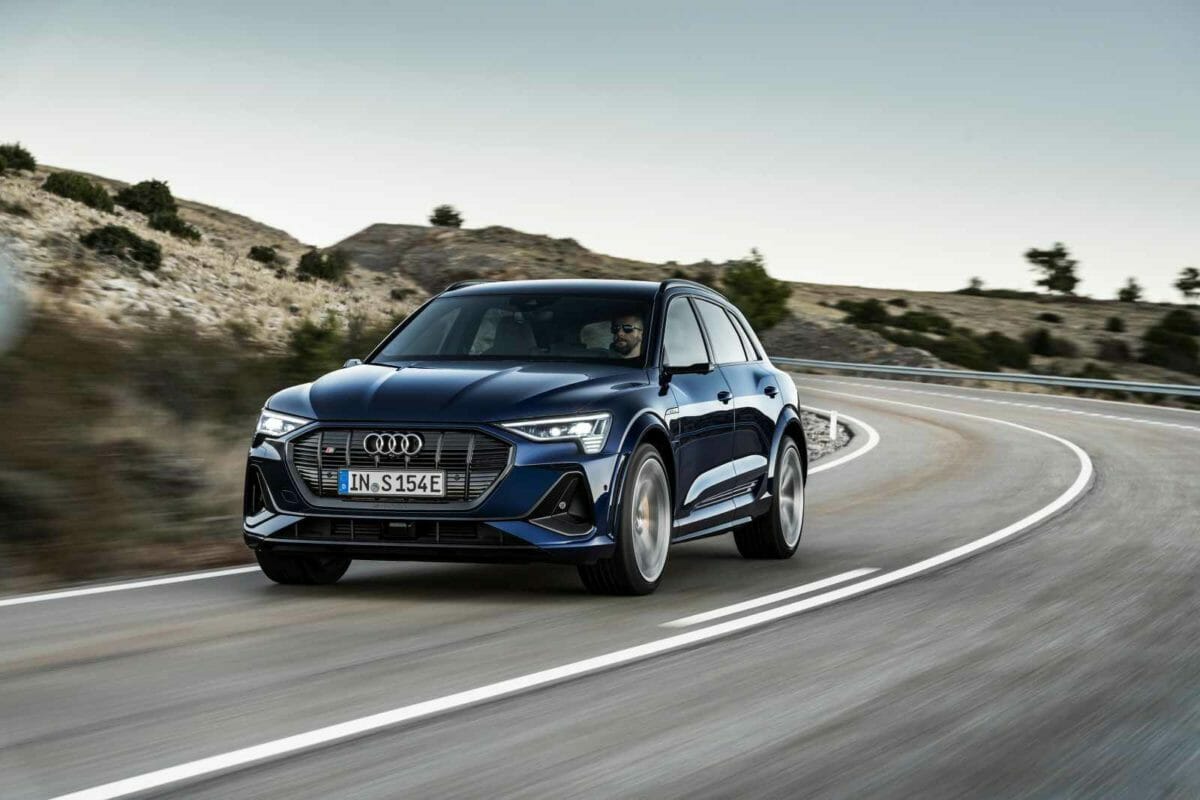
For reasons of efficiency, the electric SUVs use only the rear electric motor in most situations. If the driver requests more output than it can provide, the front unit will instantly be activated. This also happens predictively before slip occurs in icy conditions or during fast cornering, or if the car understeers or oversteers. The result is extremely precise handling that can be adjusted to a large extent via the suspension control systems, from supremely stable to sporty.
At the beginning of 2020, Audi upped the ante with the first expansion stage of the electric all-wheel drive: electric torque vectoring in the Audi e-tron S and the Audi e-tron S Sportback, i.e. shifting the forces between the rear wheels, which are each powered by separate motors. It takes just milliseconds to engage extremely high torque, allowing the car to be driven into curves as energetically as a sports car. Audi is the first manufacturer in the premium segment to mass-produce the technology using three electric motors.
Variants of the mechanical quattro drive
The Audi quattro technology is versatile and tailored precisely to suit the specific vehicle concept. One thing that all versions share is a supplementary solution: Wheel-selective torque control is a software function of Electronic Stabilization Control (ESC). During dynamic cornering, it applies the brakes very gently to the unloaded wheels on the inside of the curve before they have the chance to slip. Due to the difference in propulsion forces, the car turns slightly into the corner. This input makes handling even more neutral, dynamic, and stable.
There are two technologies available for models with longitudinal front-mounted engines, depending on transmission. The quattro permanent all-wheel drive, which cooperates with the Tiptronic torque-converter automatic transmission, centres on a purely mechanical self-locking centre differential. In regular driving, it distributes 40 percent of the torque to the front axle and 60 percent to the rear axle, creating a slight rear bias for a sporty driving style. If necessary, it will transfer up to 70 percent to the front axle or up to 85 percent to the rear.
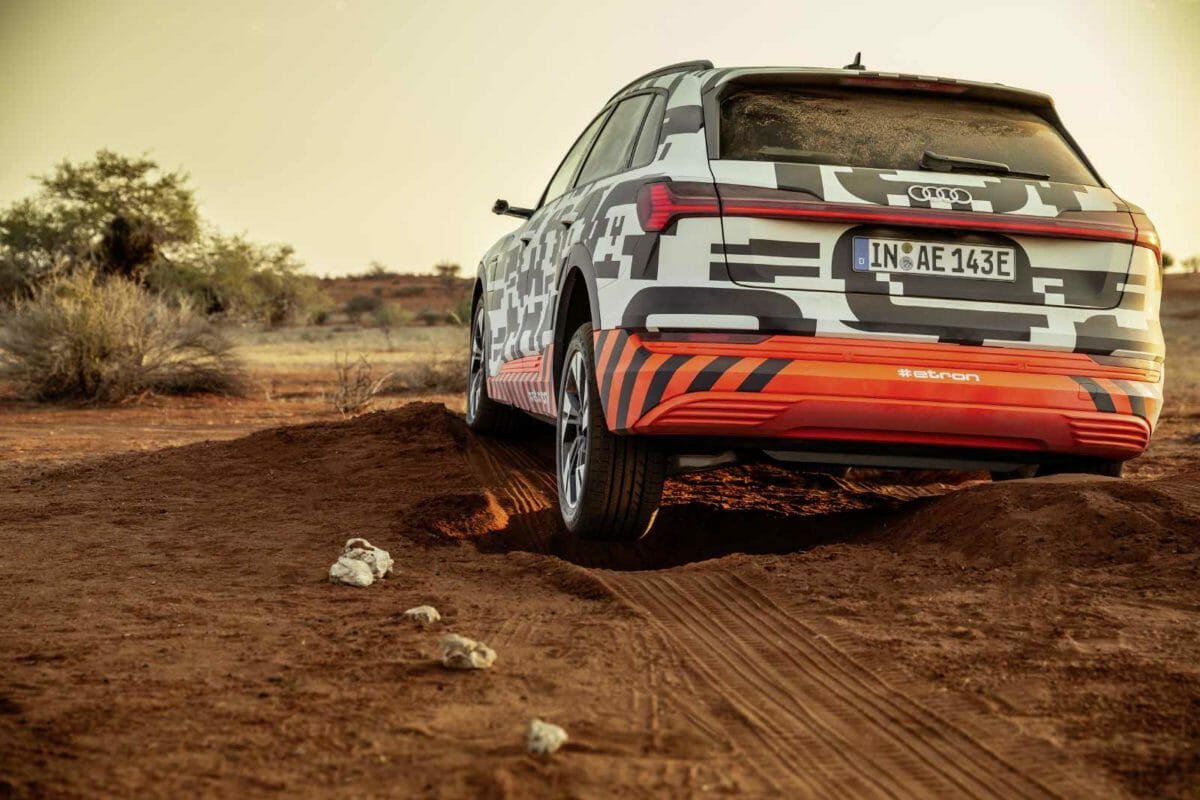
However, quattro with ultra technology – which has been optimized for efficiency and can be found in Audi models with S Tronic or with manual transmissions – uses a dual-clutch arrangement. When the system changes to efficient front-wheel drive, the front clutch – a multi-plate clutch at the transmission output – disconnects the prop shaft. An integrated decoupling clutch also opens in the rear differential. This shuts down the primary cause of drag losses in the rear section of the drivetrain. The all-wheel-drive system’s intelligent control works predictively, always looking ahead via a comprehensive array of sensors and continuous analysis of the data on driving dynamics, the road condition, and driver behaviour.
The Audi models with longitudinal front-mounted engines and Tiptronic automatic transmissions employ the classic quattro drive system with a self-locking centre differential, which operates by purely mechanical means and therefore without any delay whatsoever. It is configured as a planetary gear. This involves an internal gear encompassing a sun gear, with cylindrical planet gears, joined to the rotating housing, turning between them.
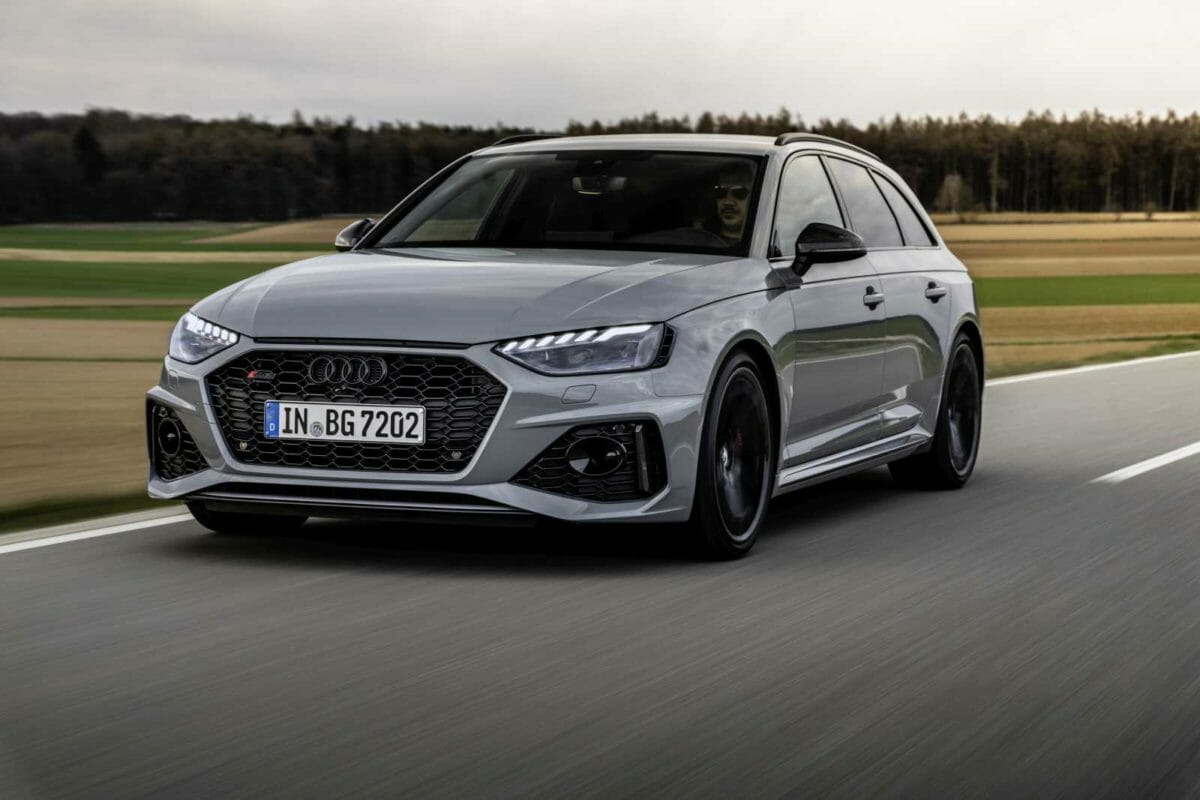
The quattro all-wheel-drive system is thus always ready when needed. Drivers will not notice any differences in terms of traction and handling compared with permanent systems. The compact Audi models with transverse engines use their own quattro drivetrain. At its core is a hydraulic multi-plate clutch that sits on the rear axle for better weight distribution. This is managed so dynamically that it can transfer some of the torque from the front axle to the rear as soon as the car starts to turn in to a corner. There is also a multi-plate clutch in the R8, amid-engined high-performance sports car. In this case, it is mounted on the front axle. When necessary, it transfers the torque from the rear wheels to the front wheels.
The sport differential is available for the particularly powerful and sporty Audi models with Tiptronic. It further improves handling, traction, and stability by distributing drive torque ideally between the rear left and right wheels in all operating states. During turning or acceleration, mechanical torque vectoring literally presses the car into the curve without producing any understeer.In addition to the functions covered by a conventional differential, the sport differential has a transmission stage and hydraulic multi-plate clutch fed by an oil pump. During fast cornering, the clutch engages for the wheel on the outside of the curve, which has better grip due to the dynamic wheel load distribution. The clutch variably imposes a higher speed on the transmission stage for the relevant wheel. The extra torque required is taken from the opposite wheel via the differential, which means that almost all the torque goes to the wheel on the outside of the curve. Up to 1,200 Nm (885.1 lb-ft) of the drive torque can be transferred to one wheel in this way.
Motorsport Legacy
Audi entered the world of rallying as a works team in 1978, initially running front-wheel-drive cars. Barely a year had passed since the original quattro was first unveiled in Geneva than the brand began to achieve enormous success in the World Rally Championship. Hannu Mikkola of Finland won the first six special trials in the snow at the 1981 Monte Carlo Rally. He had a lead of almost six minutes when victory slipped through his fingers due to a minor accident. He recorded his first victory at the next round in Sweden.
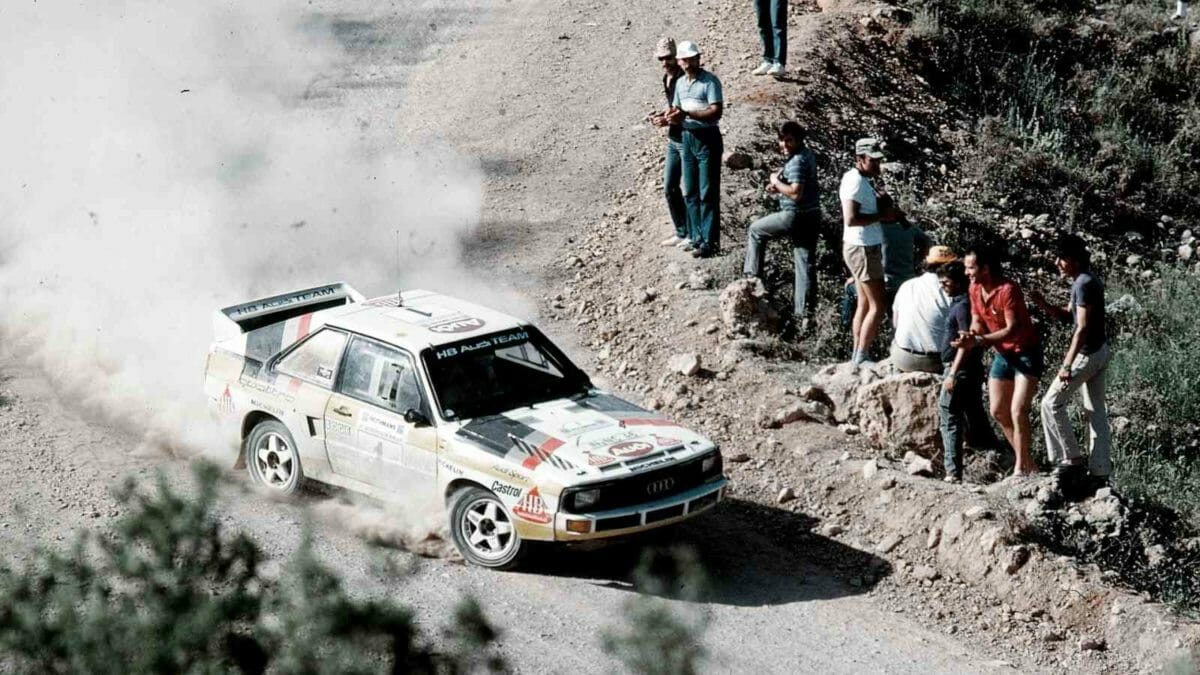
The following year, the quattro dominated the championship. Audi set a new benchmark with seven victories and easily won the manufacturers’ championship. One year later, Mikkola took home the drivers’ title. The 1984 season also started off with a bang – the newly recruited two-time world champion Walter Röhrl won the Monte Carlo Rally ahead of his teammates Stig Blomqvist (Sweden) and Mikkola. At the end of the season, Audi claimed both the manufacturers’ title and the drivers’ title with Blomqvist.
To make better use of the loose regulations of the Group B class of rallying, Audi developed the sport quattro for the 1984 season. This had a shorter wheelbase that promised nimbler handling. It was followed in 1985 by the Sport quattro S1, which developed 350 kW (476 PS) and was instantly elevated to legendary status due in part to its striking rear spoiler. In the middle ratio, the 1,090-kilogram (2,403.0 lb) S1 shot from 0 to 100 km/h (62.1 mph) in 3.1 seconds. In the last event of the season, the British RAC Rally, Walter Röhrl used a dual-clutch transmission that was actuated pneumatically – a precursor to today’s S Tronic.
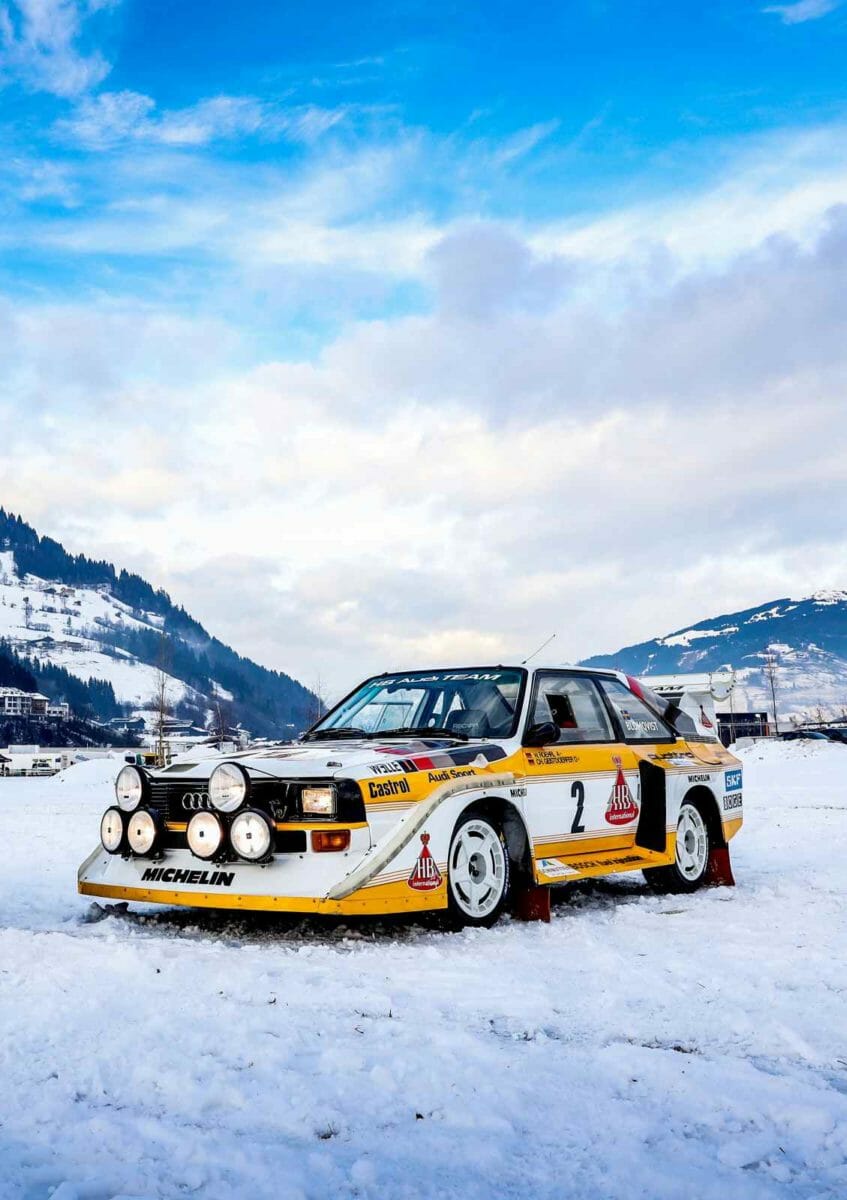
When the exhilarating Group B years came to an end in 1986, Audi pulled out of the World Rally Championship – but not without one last bombshell. In July 1987, Röhrl triumphed at the Pikes Peak hill climb, driving an extensively modified Sport quattro S1 adorned with some enormous wings. Michèle Mouton (France) and Bobby Unser (USA) had already won the classic race in the US State of Colorado in the two previous years. Walter Röhrl tackled the 19.99-kilometre (12.4 mi) course, very little of which was paved at the time, in a record time of 10 minutes and 47.85 seconds, hitting a top speed of 196 km/h (121.8 mph). As he noted, “It was the very pinnacle of what can be done with a rally car.”
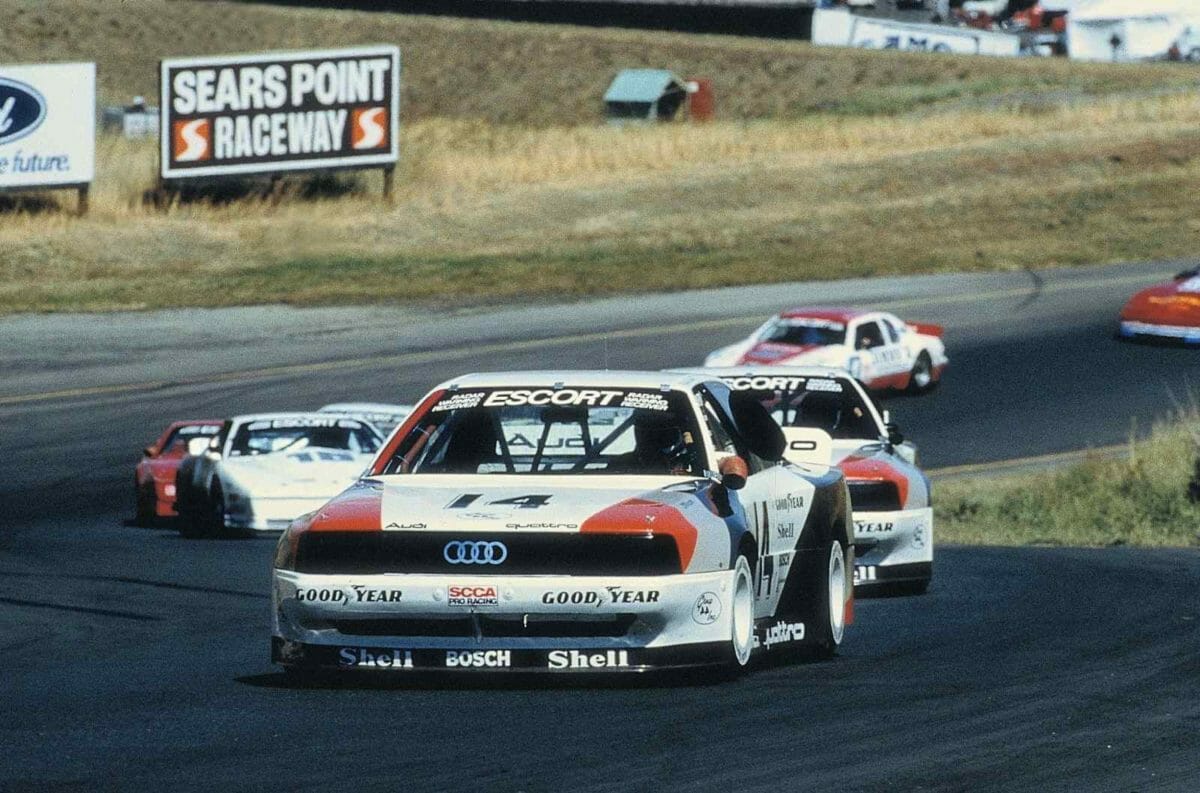
The brand competed in the Trans-Am series in the USA with the Audi 200 in 1988, winning the manufacturers’ and drivers’ titles at the first attempt. Audi switched to the Deutsche Tourenwagenmeisterschaft (DTM) touring car championship in 1990. Stuck won the drivers’ title with the big and powerful V8 quattro that first year, followed by Frank Biela in 1991. By the time Audi withdrew from the series in 1992, it had won 18 out of 36 races. In 1996, the Audi A4 quattro Supertouring, with its two-litre, four-cylinder engine, entered seven national championships on three continents – and won them all.
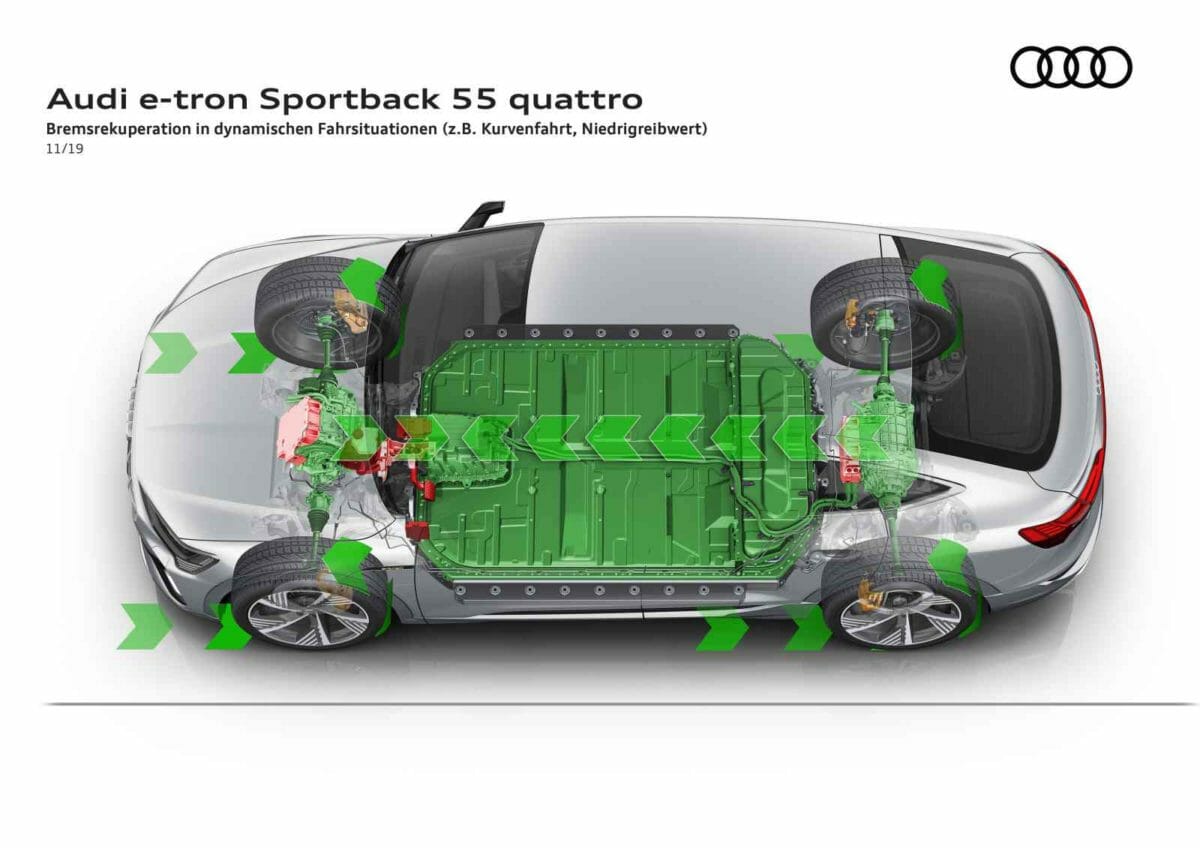
It wasn’t until 2012 that an Audi all-wheel-drive race car – the Audi R18 e-tron quattro with hybrid drive – once again took to the track for a circuit race. A V6 TDI drove the rear wheels, while a flywheel accumulator supplied recuperated energy to two electric motors on the front axle. When the situation called for maximum traction during acceleration, the racing car was capable of throwing its temporary quattro drive system into the mix for a few crucial seconds. With three consecutive overall victories at the 24 Hours of Le Mans and two drivers’ and manufacturers titles in the World Endurance Championship (WEC), Audi provided a convincing demonstration of the potential of the concept.

